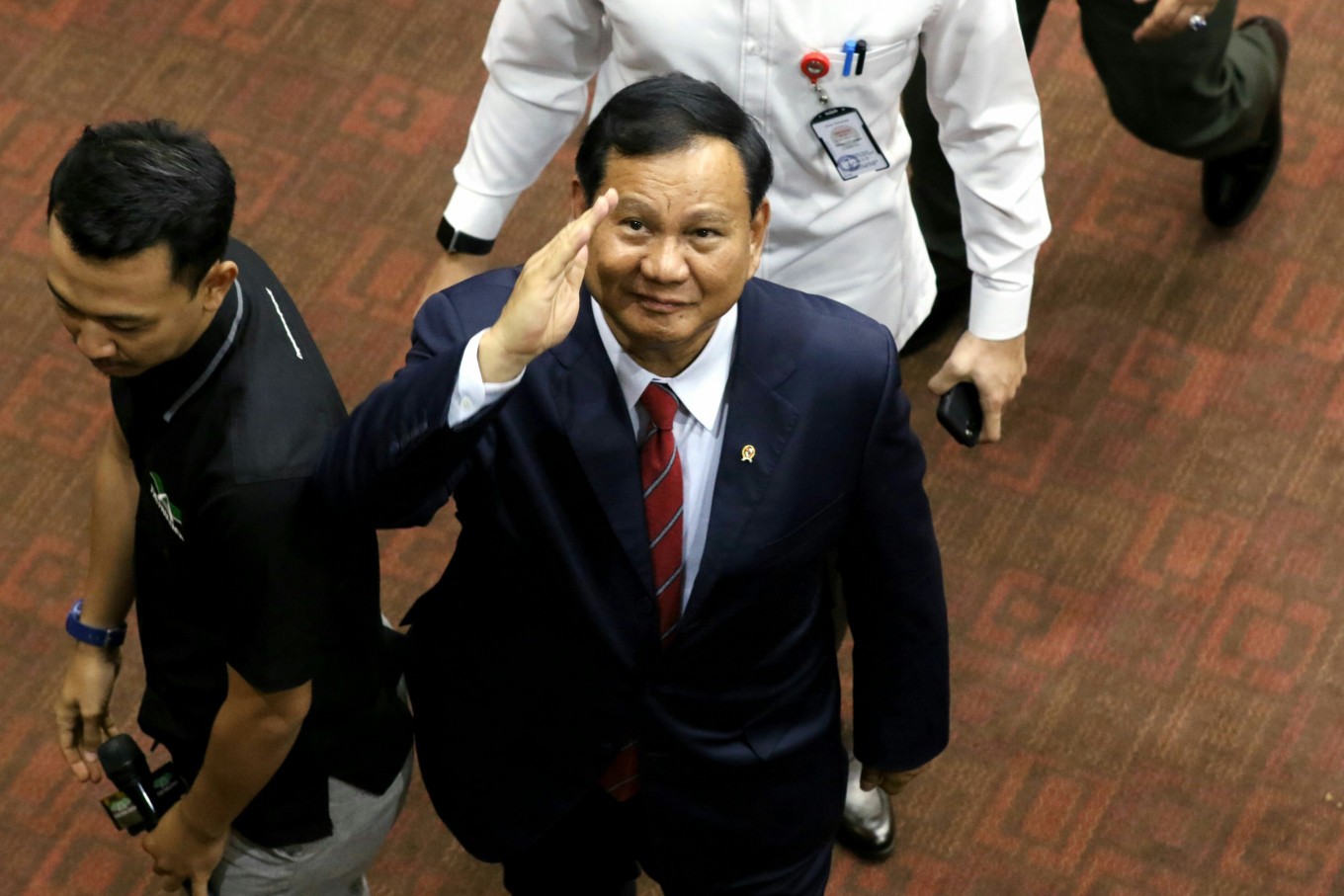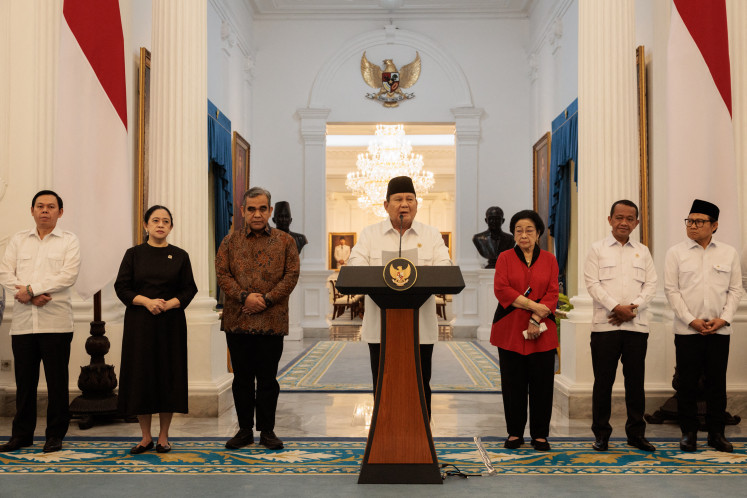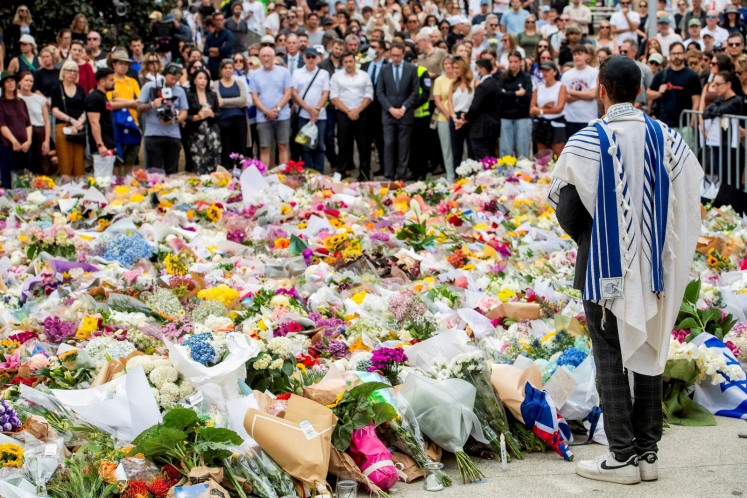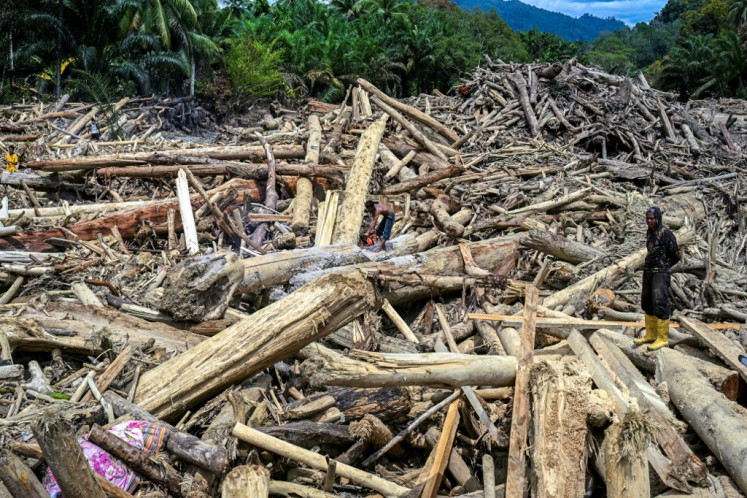Popular Reads
Top Results
Can't find what you're looking for?
View all search resultsPopular Reads
Top Results
Can't find what you're looking for?
View all search resultsWhere is defense white paper, Minister Prabowo?
The latest Indonesian defense white paper came in 2015. It is therefore expected that a new defense white paper should be available next year, if the five-year interval is to be made regular.
Change text size
Gift Premium Articles
to Anyone
 At your command: Defense Minister Prabowo Subianto salutes journalists before his first working meeting as minister with members of House of Representatives Commission I, which oversees defense, foreign affairs, information and intelligence, at the House complex in Senayan, Central Jakarta, on Monday. (JP/Dhoni Setiawan)
At your command: Defense Minister Prabowo Subianto salutes journalists before his first working meeting as minister with members of House of Representatives Commission I, which oversees defense, foreign affairs, information and intelligence, at the House complex in Senayan, Central Jakarta, on Monday. (JP/Dhoni Setiawan)
S
ince his inauguration on Oct. 23, Defense Minister Prabowo Subianto has visited a number of entities within the Defense Ministry’s supervision. The tours were aimed at both garnering insights from and identifying problems of the entities — everything he needs to address in his capacity as assistant to President Joko “Jokowi” Widodo for defense affairs.
After apparently learning enough upon his visits to the Indonesian Defense University, a higher learning institution on security and defense, to the Indonesian Military (TNI) headquarters, where he met the rank and file of the military organization, and to state-owned weapons manufacturer PT Pindad and state-owned telecommunications company PT Industri Telekomunikasi Indonesia Persero (INTI), where he met not only Pindad and INTI executives but also those of other state-owned companies in defense-related strategic industries, Prabowo eventually attended a hearing with the House of Representatives Commission I overseeing defense, foreign affairs, information and intelligence on Monday.
Presenting his vision and mission statement before the lawmakers, Prabowo renewed the commitment he made during the presidential election debate last March to upgrade the country’s defense posture, specifically referring to the classic phrase: “Si vis pacem para bellum” (If you want peace, prepare for war) adapted from a statement found in Latin author Publius Flavius Vegetius Renatus’ tract De Re Militari (4th or 5th century AD), and the popular quote of Thucydides, an ancient Greek historian and author of The History of the Peloponnesian War, which recounts the 5th century BC war between Sparta and Athens, which reads: “The strong will do what they can, and the weak suffer what they must.”
“We should therefore not let Indonesia end up as a weak country [militarily]. Our defense posture should make us a respected regional power,” Prabowo told the lawmakers.
To avoid misperception, the minister stressed that the planned building up of Indonesia’s defense posture was not aimed at exerting force upon other countries and that they should not fall into the “Thucydides Trap”, a theory proposed by American political scientist Graham T. Allison, who postulates that war between a rising power and an established power is inevitable. Allison was referring to an account by Thucydides, which reads: “What made war inevitable was the growth of Athenian power and the fear this caused in Sparta.”
Prabowo’s presentation to the House lawmakers on the planned upgrade of the defense posture was in the context of the prolonged discourse on the country’s military modernization program. But he fell short of explaining the Defense Ministry’s strategies and programs to realize his vision and mission statement, including the reasons behind the “stalled” program to replace obsolete weapons and military equipment.
The general public is apparently curious about Prabowo’s plan of action, particularly on the already committed Minimum Essential Force (MEF) scheme, the 15-year military modernization program, which is expected to be completed by 2024 — also the final year of President Jokowi’s second term in office. As of this year, the government has only achieved 62.8 percent of the commitment, well below the targeted 72 percent.
Topping the priority list of the modernization program include the planned purchase of jet fighters to replace the aging F-5-E/F Tiger II warplanes and the renegotiation for a joint jet fighter development project with South Korea — the Korean Fighter Xperiment/Indonesia Fighter Xperiment (KFX/IFX) project. Also part of the MEF scheme is the targeted procurement and joint development of Chang Bogo-class diesel attack submarines, also from South Korea, to increase the fleet from five submarines to 12.
Other than that, the government is also seeking to complete the establishment of an integrated radar surveillance system that is expected to cover the country’s land, water and air territories. Such an integrated system is needed not only to ensure complete coverage of the country’s jurisdiction, but also interoperability with the existing defense equipment and system in operation.
Instead of devising the action plans and strategies for the completion of the MEF program, Prabowo told the lawmakers of his vision of “total people’s defense” as a way to compensate for the TNI’s limited budget. While establishing a “combat-ready” population is an important element of the country’s integrated defense, the minister should have instead brought all the obstacles in the military modernization program into discussion with the House lawmakers.
All those inquiries about the Defense Ministry’s modernization plan and strategy could in fact be addressed and incorporated into a defense white paper. Such a document would be fruitful not only because it would provide comprehensive information about the country’s defense and/or military posture and strategy, but would also explain this to the outside world to prevent misinterpretation, which is what leads nations to fall into the Thucydides Trap.
The latest Indonesian defense white paper came in 2015. It is therefore expected that a new defense white paper should be available next year, if the five-year interval is to be made regular.
Another key aspect in the military modernization program is the availability of funds to execute the program. In return, due to the fact that nearly 80 percent of state revenue originating from the taxpayers’ money, transparency therefore plays an important role in ensuring that the state budget will be accordingly spent, rather than misappropriated.









